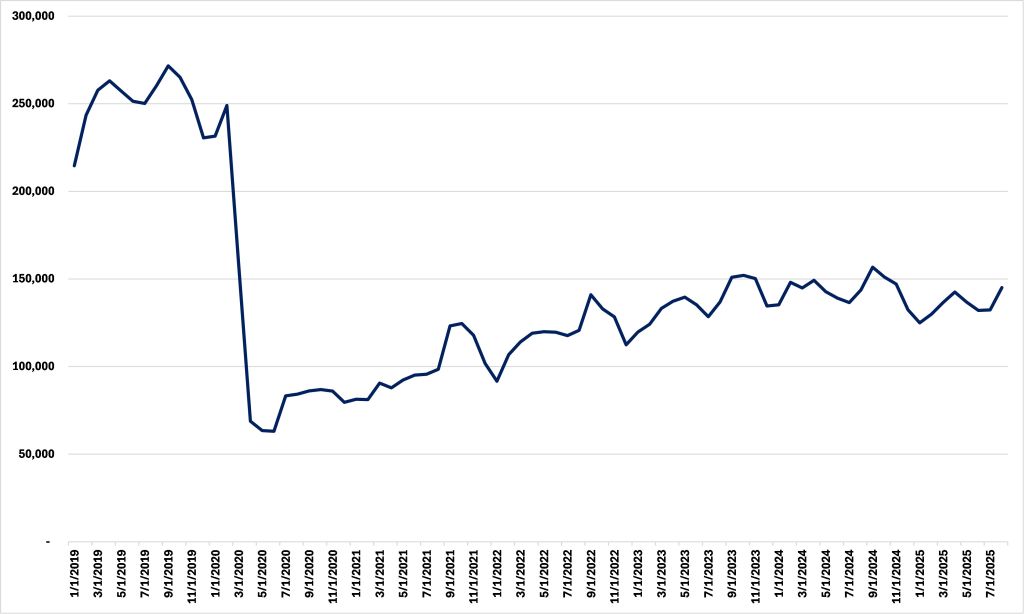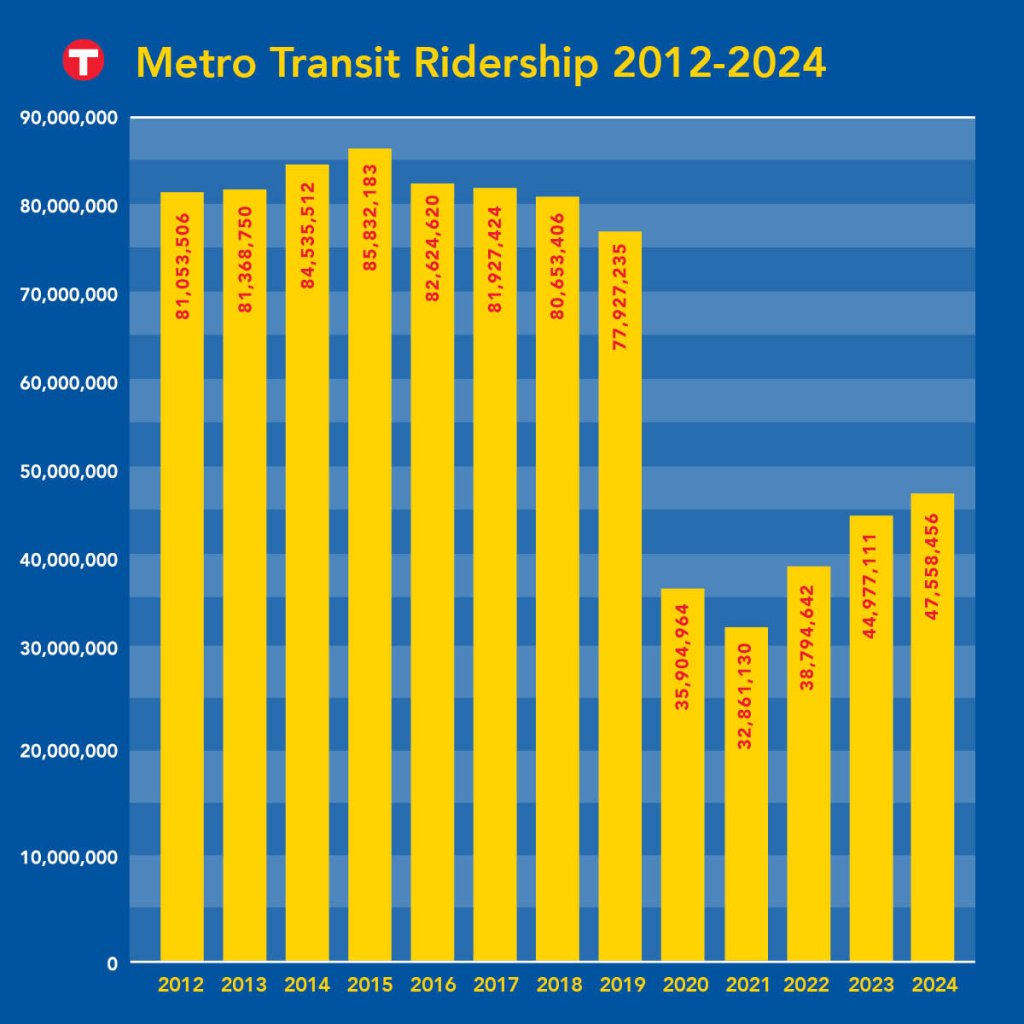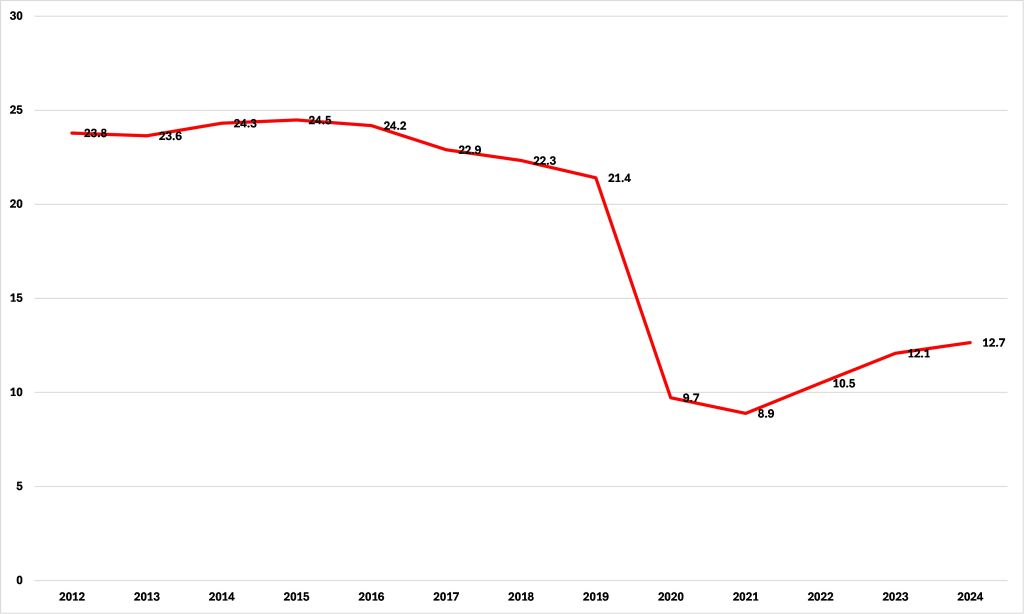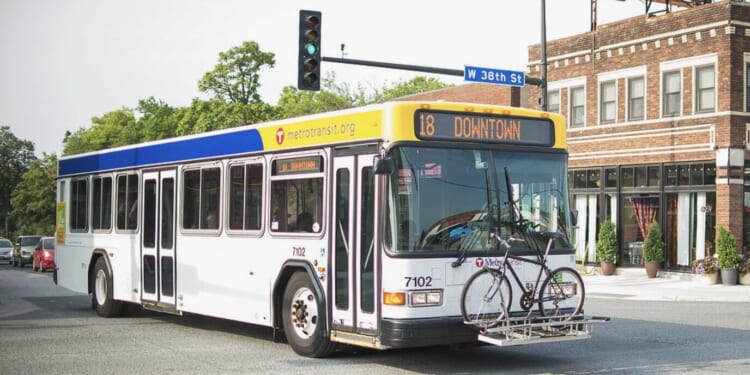In July, Metro Transit announced that it would “enhance service on more than 20 routes starting Saturday, Aug. 16, as access to transit continues to expand across the region.” But expanding people’s access to the system isn’t the same thing as expanding their use of the system.
Metro Transit data show that, overall, use of the network collapsed in the first half of 2020 and has yet to recover, more than five years on. In the fourteen months from January 2019 to February 2020 inclusive, average daily ridership came to 249,875. As Figure 1 shows, in the fourteen months to August 2025, the average daily ridership was 139,126, 44% down from the pre-Covid-19 average.
Figure 1: Metro Transit average daily ridership, Total System

In a recent article on a campaign to get more Twin Cities residents using Metro Transit, the Star Tribune wrote that “[t]he COVID-19 pandemic caused a rapid drop-off in transit use…” But there is more to the story than this.
Metro Transit’s own data show that ridership didn’t peak on the eve of Covid-19 but back in 2015. Indeed, between that peak and 2019, total ridership fell by 9%. Metro Transit’s decline dates back a decade.

Figure 2 makes the same point. Dividing the total ridership above by the population of the Twin Cities metro to get a figure for rides per capita, we see that this peaked in 2015 at 24.5 and that the figure in 2024 — 12.7 — is down 48% from that peak of Metro Transit use a decade ago.
Figure 2: Metro Transit rides per person

As with so many processes, Covid-19 didn’t cause them but simply accelerated them. Metro Transit use was already drifting down in absolute and population adjusted terms when the pandemic hit. Whatever continues to ail the network five years on was at work before that.










